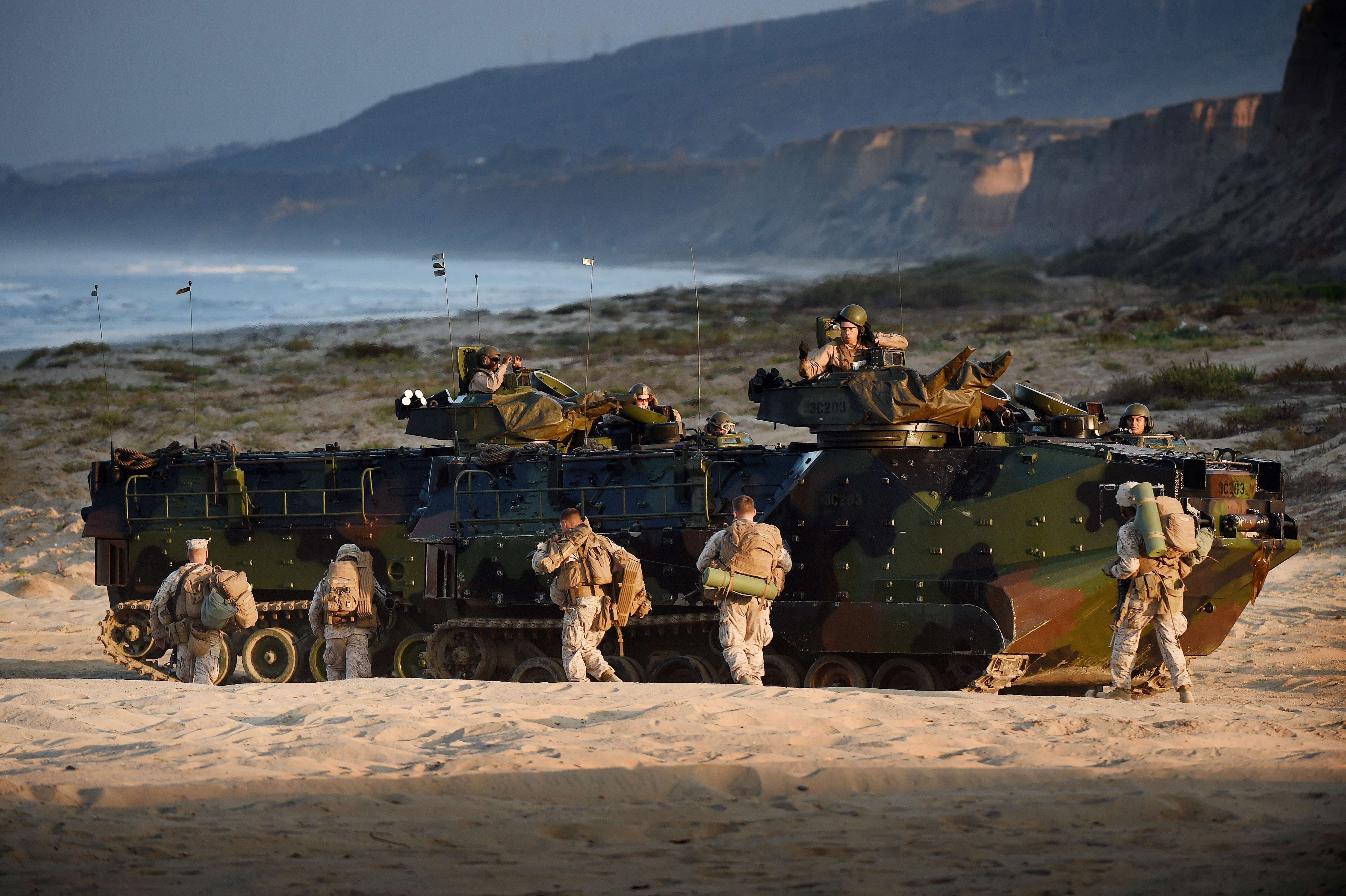During Defense Secretary Mark Esper’s stop at the tiny island nation of Palau he visited civil affair compounds and met with high ranking government officials, building on a relationship with the country that has seen U.S. troops rotate through for more than 40 years.
The relationship between the U.S. and Palau ― a tiny Pacific island near the Philippines ― was formalized in the 1994 Compact of Free Association, which saw the U.S. take over the country’s national defense.
During Esper’s late August visit, Palau’s President Thomas Remengesau proposed an increase to the American presence there, a potential boon for the Marine Corps Commandant Gen. David Berger’s plan to face China and for the future of the Marine Corps.
When Berger took over as the top Devil Dog in summer 2019 the commandant pushed out planning guidance that reimagined the Marine Corps, moving away from a force designed to fight insurgents in the Middle East to one positioned to play a critical role in any war against China.
RELATED

Part of that plan incorporates the expeditionary advanced base operations, which see small units of Marines spread across small islands in the Pacific forming a skirmish line capable of re-supplying America’s Navy, while attacking China from afar and making it difficult for the Chinese to operate off of its mainland.
The new Marine force will operate inside range of Chinese missiles with the hope of being too small and too mobile to be taken out by long-range Chinese strikes.
Palau, which is made up of more than 300 small islands, could play a pivotal role in the EABO concept, said Chris Dougherty, a former senior adviser to the deputy assistant defense secretary for strategy and force development and now a senior fellow at the Center for a New American Security in Washington.
“It could be a place where you can see a staging base to support forces forward,” Dougherty said.
Dougherty said the nation’s usefulness as an offensive base depends entirely on how aggressive and ambitious China would be in a potential conflict.
The nation lies just over 2,700 miles from the Chinese coast, too far for any Marine Corps weapons to strike against the Chinese military trying to expand into the South China Sea or invade Taiwan, Dougherty said.
But if China moves past those goals and starts to threaten a wider portion of the Pacific the Marine Corps could potentially bring missiles or electronic warfare equipment to the fight directly against the Chinese.
“If you’re a little bit more pessimistic about the future trajectory of the U.S., China competition and you actually think China is interested in projecting power in the central Pacific … it (Palau) could end up being an offensive base of operations for the Marine Corps,” Dougherty said.
If China remains conservative in its fight and remains relatively close to its coastline, the small nation could still be extremely useful as a relatively safe spot to stage troops or resupply ships heading to the frontlines.
“It’s out of range of the much more dense threat of Chinese missiles, still in range of some,” Dougherty said about the safety of an EABO on Palau.
As part of the Corps' annual rotation to Palau, called Task Force Koa Moana, Marines with I Marine Expeditionary Force repaired a runway on Angaur, Palau, that was originally built to support the battle of Peleliu, Palau, in World War II.
After seven days of work the airfield, which had been abandoned since the 1980s, was certified as C-130 capable, according to a Marine Corps press release.
Only nine days after the completion the airfield was put to the test, bringing in soldiers on a C-130 as part of Exercise Pacific Defender, another Department of Defense press release said.
“The project went well,” 1st Lt. Geoffrey Tanner, the engineer officer in charge with Task Force Koa Moana said in the press release. “It’s a unique opportunity for our Marines, and it’s rewarding to know we’re contributing to the partnership between our two nations.”
Dougherty pointed out how useful having a C-130 in the region could be for the U.S. military facing off against China.
“Once you open the world up to C-130 delivery, it actually creates an enormous amount of flexibility for the joint force,” he said.
For now the airfield will be used to help bring more tourists to the island, as the military does not currently plan on creating a permanent presence on the island nation, a Defense Department spokesman said.
“The U.S. is committed to working and partnering with likeminded countries in defense of a free and open Indo-Pacific,” Defense Department spokesman Army Lt. Col. Chris Mitchell told Marine Corps Times in an email on Tuesday.
“DoD’s focus is on access to places from which to operate, not necessarily new permanent bases,” he added.





